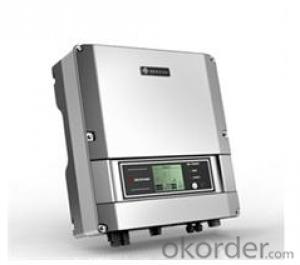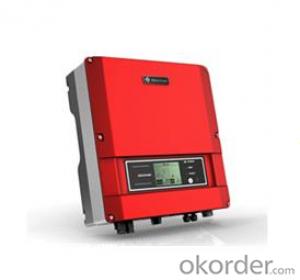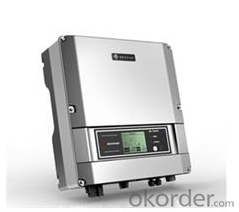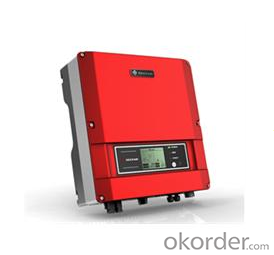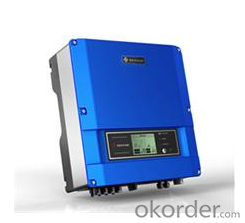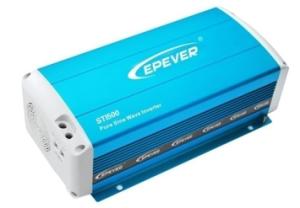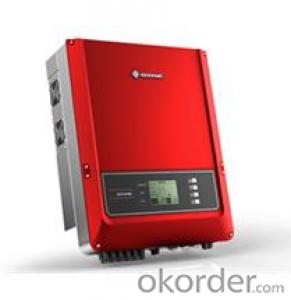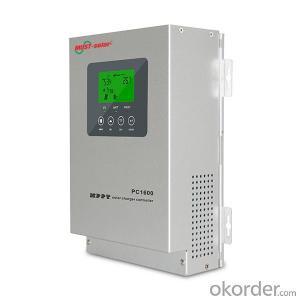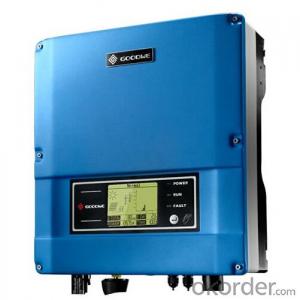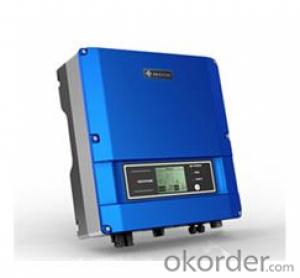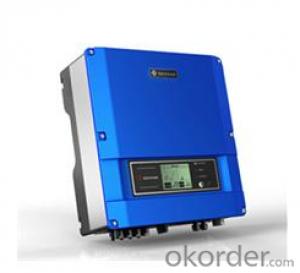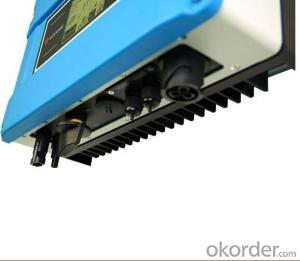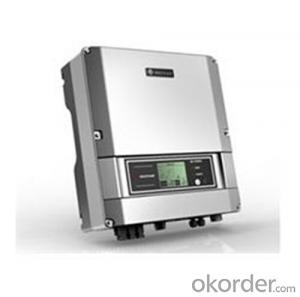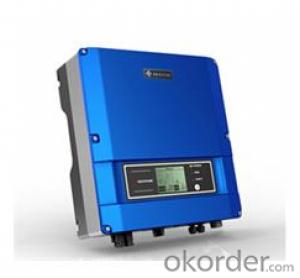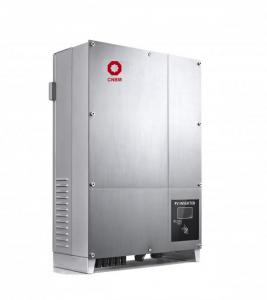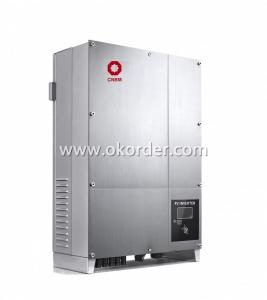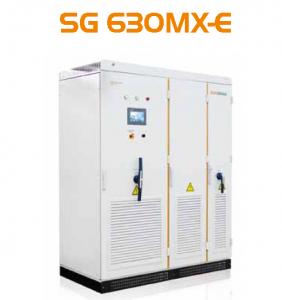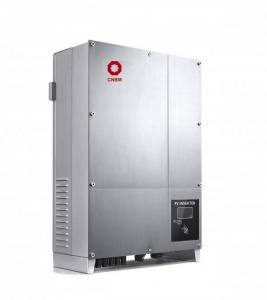Solar Inverter in Pakistan - On Grid Solar Inverter GS4600-SS
- Loading Port:
- Shanghai
- Payment Terms:
- TT OR LC
- Min Order Qty:
- 10 unit
- Supply Capability:
- 100 unit/month
OKorder Service Pledge
OKorder Financial Service
You Might Also Like
GW4600-SS
GW4600-SS photovoltaic inverter is suitable for home rooftop photovoltaic system, designed under modern industrial concept. There are three colors for option with fashionable appearance. The maximum output power of this model can reach 5100W. It is not only the largest one among GoodWe single-phase inverters, but also the model with the maximum power using single-tube design. Besides, it maintains extremely higher conversion efficiency, uses natural heat dissipation and has an extremely wide range of input voltage and input current. It holds a safe lead among the same level of products.
| DC Input Data | Max.PV-generator power[W] | 5400 |
| Max.DC voltage[V] | 580 | |
| MPPT voltage range[V] | 125~450 | |
| Turn on DC voltage[V] | 125 | |
Max.DC work current[A] | 20 | |
| Number of inputs/MPP trackers | 3/1 | |
| DC connection | MC IV Connector | |
| Self-energy consumption[W] | <5< td=""> | |
| AC Output Data | Nominal AC power[W] | 4600 |
| Max.AC power[w] | 5100 | |
| Max.output current[A] | 25 | |
| Nominal output voltage range | According to VDE0126-1-1/AI, RD1663, ENEL, G83,G59,SAA | |
| AC grid frequency | According to VDE0126-1-1/AI, RD1663, ENEL, G83,G59,SAA | |
| THDi | 〈1% | |
| Power factor | ~1 (Norminal power) | |
| AC connection | Single phase | |
| Efficiency | Max.efficiency | 97.8% |
| European efficiency | 97.4% | |
| MPPT adaptation efficiency | >99.5% | |
| Safty Equipment | Leakage current monitoring unit | Integrated |
| DC disconnector switch | Optional | |
| Islanding protection | AFD | |
| Grid monitoring | According to VDE 0126-1-1/AI,AS4777.1/2/3, RD1663, ENEL,G83,G59-2 | |
| Normative Reference | EMC compliance | EN 61000-6-1,EN 61000-6-2, EN 61000-6-3,EN 61000-6-4 |
| Safety compliance | According to IEC 62109-1,AS3100 | |
| General Data | Dimensions(W*H*D) [mm] | 390*417*142 |
| Net weight [kg] | 18 | |
| Housing | For outdoor and indoor | |
| Mounting information | Wall mounting | |
| Operating temperature range | -20~60℃(up 45℃ derating) | |
| Relative humidity | 0 ~ 95% | |
| Site altitude[m] | 2000 | |
| IP proection class | IP65 | |
| Topology | Transformerless | |
| Cooling | Nature convection | |
| Noise level[dB] | 〈25 | |
| Display | 4"LCD | |
| Communication | USB2.0;RS485(Wireless/Bluetooth optional) | |
| Standard warranty[years] | 5/10(optional) |
- Q: What is the impact of temperature on the performance of a solar inverter?
- The impact of temperature on the performance of a solar inverter is significant. High temperatures can cause the efficiency of the inverter to decrease, resulting in a reduction in power output. This is due to the fact that electronic components inside the inverter operate less efficiently at high temperatures. Additionally, elevated temperatures can lead to increased thermal stress on the inverter, potentially shortening its lifespan. Therefore, it is important to carefully consider the temperature conditions and provide adequate cooling or ventilation for optimal performance and longevity of the solar inverter.
- Q: Can a solar inverter be used with a solar-powered lighting system?
- Yes, a solar inverter can be used with a solar-powered lighting system. The solar inverter is responsible for converting the direct current (DC) generated by the solar panels into alternating current (AC) that can be used to power the lighting system. It ensures efficient energy conversion and ensures compatibility between the solar panels and lighting system.
- Q: How does a solar inverter handle overloading?
- A solar inverter handles overloading by constantly monitoring the power output from the solar panels. If the demand for electricity exceeds the maximum capacity of the inverter, it automatically reduces the power output to a safe level. This prevents the inverter from getting damaged and ensures a stable and reliable power supply.
- Q: What are the indicators of a faulty solar inverter?
- Some indicators of a faulty solar inverter may include a complete loss of power generation from the solar panels, flickering or inconsistent power output, unusual noises coming from the inverter, error messages or warning lights displayed on the inverter's screen, and a noticeable decrease in the overall efficiency of the solar system.
- Q: Can a solar inverter be used with battery storage?
- Yes, a solar inverter can be used with battery storage. In fact, integrating a solar inverter with battery storage systems allows for storing excess solar energy generated during the day and using it at night or during times of high energy demand. This combination enables greater energy independence and the ability to use renewable energy even when the sun is not shining.
- Q: Can a solar inverter be used for three-phase power systems?
- Yes, a solar inverter can be used for three-phase power systems. Three-phase solar inverters are specifically designed to convert the DC power generated by solar panels into AC power for three-phase electrical systems. These inverters are capable of handling the higher voltage and power requirements of three-phase systems, making them suitable for commercial and industrial installations.
- Q: What is the role of a solar inverter in a microgrid system?
- The role of a solar inverter in a microgrid system is to convert the direct current (DC) electricity generated by solar panels into alternating current (AC) electricity that can be used to power the various loads within the microgrid. It also manages the flow of electricity between the microgrid and the utility grid, allowing for bidirectional power flow and enabling the system to operate in both grid-connected and islanded modes. Additionally, the solar inverter ensures the stability and quality of the electricity supply, regulating voltage and frequency levels to match the requirements of the microgrid.
- Q: What is the maximum AC output current that a solar inverter can provide?
- The maximum AC output current that a solar inverter can provide depends on its rating, which varies depending on the model and capacity of the inverter.
- Q: What are the main components of a solar inverter system?
- The main components of a solar inverter system include the solar panels, the inverter itself, and various electrical components. Solar panels are the primary component of a solar inverter system. These panels are made up of photovoltaic cells that convert sunlight into direct current (DC) electricity. They are typically installed on rooftops or in open areas to maximize exposure to sunlight. The inverter is another crucial component of the system. Its main function is to convert the DC electricity produced by the solar panels into alternating current (AC) electricity, which is the type of electricity used in most homes and businesses. Inverters also regulate the flow of electricity, ensuring it matches the voltage and frequency of the utility grid. Other electrical components are also present in a solar inverter system. These may include wiring, switches, fuses, and circuit breakers, which help to connect the solar panels, inverter, and other equipment to the electrical grid. Additionally, monitoring systems and data loggers are often included to track the performance of the system and provide valuable information on energy production. Finally, a solar inverter system may also include a battery storage system. This allows excess electricity generated by the solar panels to be stored for later use, such as during periods of low sunlight or during power outages. Battery storage systems are becoming increasingly popular as they provide greater energy independence and the ability to utilize solar energy even when the sun is not shining. Overall, the main components of a solar inverter system include solar panels, the inverter, electrical components, and potentially a battery storage system. Each component plays a vital role in harnessing solar energy and converting it into usable electricity for homes and businesses.
- Q: How does a solar inverter handle voltage fluctuations?
- A solar inverter handles voltage fluctuations by constantly monitoring the input voltage from the solar panels and adjusting its output voltage accordingly. It maintains a stable output voltage even when there are fluctuations in the input voltage, ensuring that the electricity generated by the solar panels is suitable for use in the electrical grid or for powering appliances.
Send your message to us
Solar Inverter in Pakistan - On Grid Solar Inverter GS4600-SS
- Loading Port:
- Shanghai
- Payment Terms:
- TT OR LC
- Min Order Qty:
- 10 unit
- Supply Capability:
- 100 unit/month
OKorder Service Pledge
OKorder Financial Service
Similar products
Hot products
Hot Searches
Related keywords
